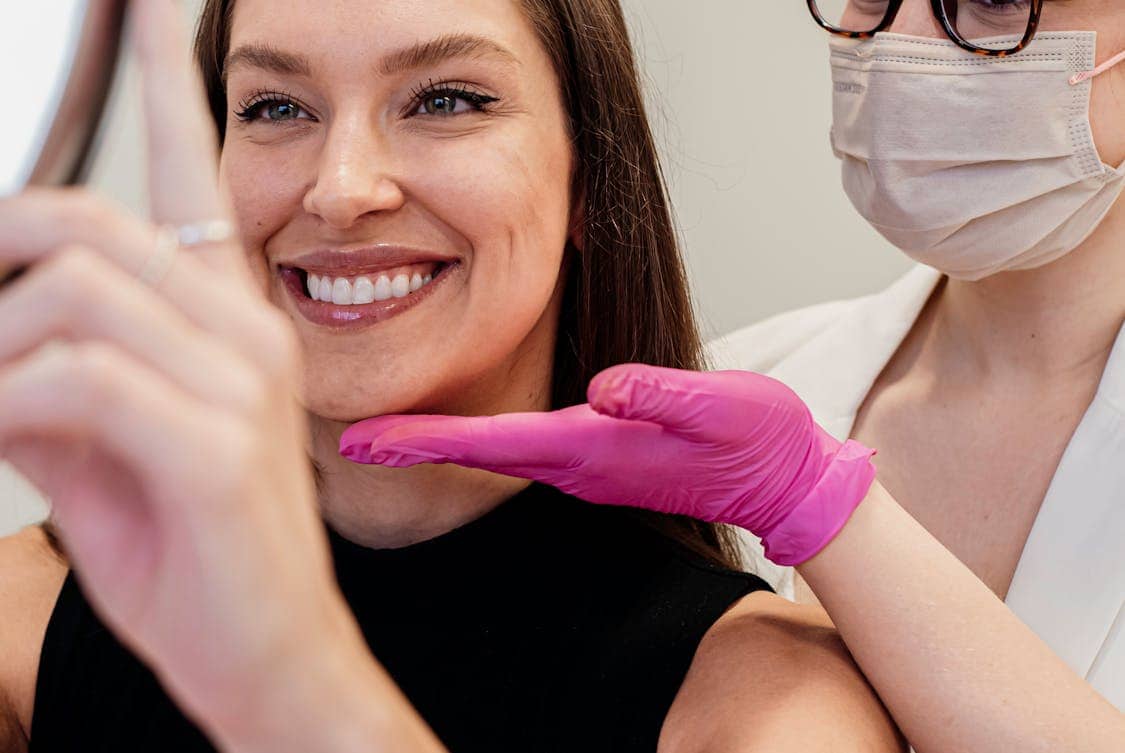Laser skin resurfacing has gained popularity as a go-to solution for those looking to rejuvenate their skin. But, what exactly does this treatment entail? And is it genuinely worth the time, effort, and financial investment?
This article will explore the ins and outs of laser skin resurfacing, examining its benefits, potential downsides, and what you should know before making a decision.
What is Laser Skin Resurfacing?
Laser skin resurfacing is a cosmetic procedure that uses laser technology to improve the skin’s appearance. By targeting specific skin layers, lasers can remove damaged skin cells, stimulating collagen production and promoting new, healthier skin growth.
This treatment can address a variety of skin concerns, including wrinkles, fine lines, acne scars, and uneven skin tone. If you’re looking to improve skin surface and texture, laser resurfacing might be just the solution to restore a youthful glow.
There are two primary types of laser resurfacing: ablative and non-ablative. Ablative lasers remove the outer layer of skin, which can lead to more significant results but requires longer recovery time.
Non-ablative lasers, on the other hand, work beneath the skin’s surface without damaging the top layer, making them less invasive and with quicker recovery periods.
The Benefits of Laser Skin Resurfacing
When considering any cosmetic procedure, weighing the benefits is essential. With laser skin resurfacing, patients often report a range of positive outcomes.
Significant Skin Improvements
One of the most renowned benefits is the noticeable improvement in skin texture and tone. Many individuals find that their skin appears smoother and more youthful after just one treatment.
Issues like sun damage, age spots, and even severe acne scars can be dramatically reduced, leading to increased self-confidence.
Boost in Collagen Production
Collagen is a protein that plays a critical role in maintaining skin elasticity and firmness. Laser treatments stimulate collagen production, which helps improve the skin’s structure over time. The result? Firmer, plumper skin that can resist the natural signs of aging longer.
Minimal Downtime
For those with busy lifestyles, the minimal downtime associated with non-ablative laser procedures is a significant plus. Many patients can resume their daily activities soon after treatment, making it an attractive option for those who want effective results without lengthy recovery periods.
Possible Downsides to Consider
While laser skin resurfacing can offer impressive results, it’s crucial to consider potential downsides as well.
Risk of Side Effects
As with any medical procedure, there are risks involved. Side effects can include redness, swelling, and even scarring in some cases. While most side effects are temporary and resolve within a few days, it’s important to do your research and talk to a qualified professional to understand the risks.
Cost Considerations
Laser treatments can be pricey, and costs vary widely based on location, the type of laser used, and the specific area being treated. Factors like the number of sessions required and follow-up care can add to the overall expense. For many, this is a significant consideration when weighing the value of the treatment.
Not Everyone is a Candidate
Not everyone is suited for laser skin resurfacing. Those with certain skin conditions or darker skin tones may encounter complications. Consulting with a qualified dermatologist is essential to determine if this treatment aligns with your skin type and concerns.
What to Expect During Treatment
If you’re contemplating laser skin resurfacing, knowing what to expect can ease anxiety and prepare you for the experience.
Pre-Treatment Consultation
Before undergoing any procedure, a consultation with a certified expert is vital. This session typically involves discussing your skin concerns, medical history, and expectations. Your doctor will evaluate your skin and recommend the most suitable laser treatment.
The Procedure Itself
The actual treatment may vary based on the type of laser used. For ablative procedures, local anesthesia or sedation may be applied to ensure comfort.
The laser is then passed over the target areas, which can feel similar to a rubber band snapping against the skin. Non-ablative treatments often require less discomfort and downtime.
Aftercare Essentials

Post-treatment care is crucial for optimal healing. Patients may experience redness and swelling, similar to sunburn, for several days. Following the aftercare instructions provided by your dermatologist, such as moisturizing and avoiding sun exposure, is essential for achieving the best results.
How Long Do Results Last?
After undergoing laser skin resurfacing, many individuals notice significant improvements that can last for years. However, the longevity of results can depend on various factors, including skin type, age, and lifestyle choices.
Maintenance Treatments
To maintain skin improvements, some people opt for periodic touch-up treatments. This ongoing care can help prolong the youthful appearance achieved through the initial procedure. Skincare routines and sun protection also play crucial roles in preserving the results.
Individual Variability
Everyone’s skin responds differently to treatments. While some may enjoy long-lasting effects, others may require additional sessions for continued improvement. Regularly consulting with a skincare professional can help tailor a personalized plan for maintaining skin health.
Comparing to Other Treatments
In the world of skincare, numerous options exist for those looking to rejuvenate their appearance. Understanding how laser skin resurfacing stacks up against other treatments can help you make an informed choice.
Chemical Peels and Microdermabrasion
Both chemical peels and microdermabrasion are popular alternatives to laser treatments. They can improve skin texture and tone but often involve multiple sessions to achieve results comparable to those seen with laser resurfacing.
Additionally, recovery times may vary, with peels potentially requiring more downtime depending on their strength.
Injectable Solutions
For those focused on reducing wrinkles, injectable options like Botox and dermal fillers present another avenue. These treatments provide immediate results, but they are temporary and require ongoing maintenance. Laser resurfacing, while taking longer to show results, offers more comprehensive skin improvement in the long run.
Personal Stories and Testimonies
Hearing from those who’ve undergone laser skin resurfacing can provide valuable insights. Many patients share experiences of renewed self-esteem and satisfaction with their appearance. They often report feeling more confident and willing to engage in social activities after treatment.
Individual Experiences Vary
While most testimonials are positive, it’s important to remember that results can vary. Factors like the severity of skin issues and individual healing responses play significant roles in outcomes. Engaging with community forums or support groups can offer additional perspectives and advice.
Making the Decision
Deciding whether laser skin resurfacing is worth it ultimately comes down to personal preference and skin goals. By weighing the benefits against potential downsides, individuals can determine if the investment aligns with their desires for skin improvement.
Consulting Professionals
Before making a commitment, seeking advice from qualified dermatologists or skincare professionals is essential. They can provide tailored recommendations and help set realistic expectations based on each individual’s unique circumstances.
Commitment to Aftercare
Committing to aftercare and following professional advice is key to achieving lasting results. A proactive approach to skincare can enhance and maintain the benefits gained from laser resurfacing, offering even more value for the time and money invested.
In the end, laser skin resurfacing presents a viable option for many, but understanding the full picture—benefits, risks, alternatives, and personal goals—will lead to the most informed decision.









Leave a Comment